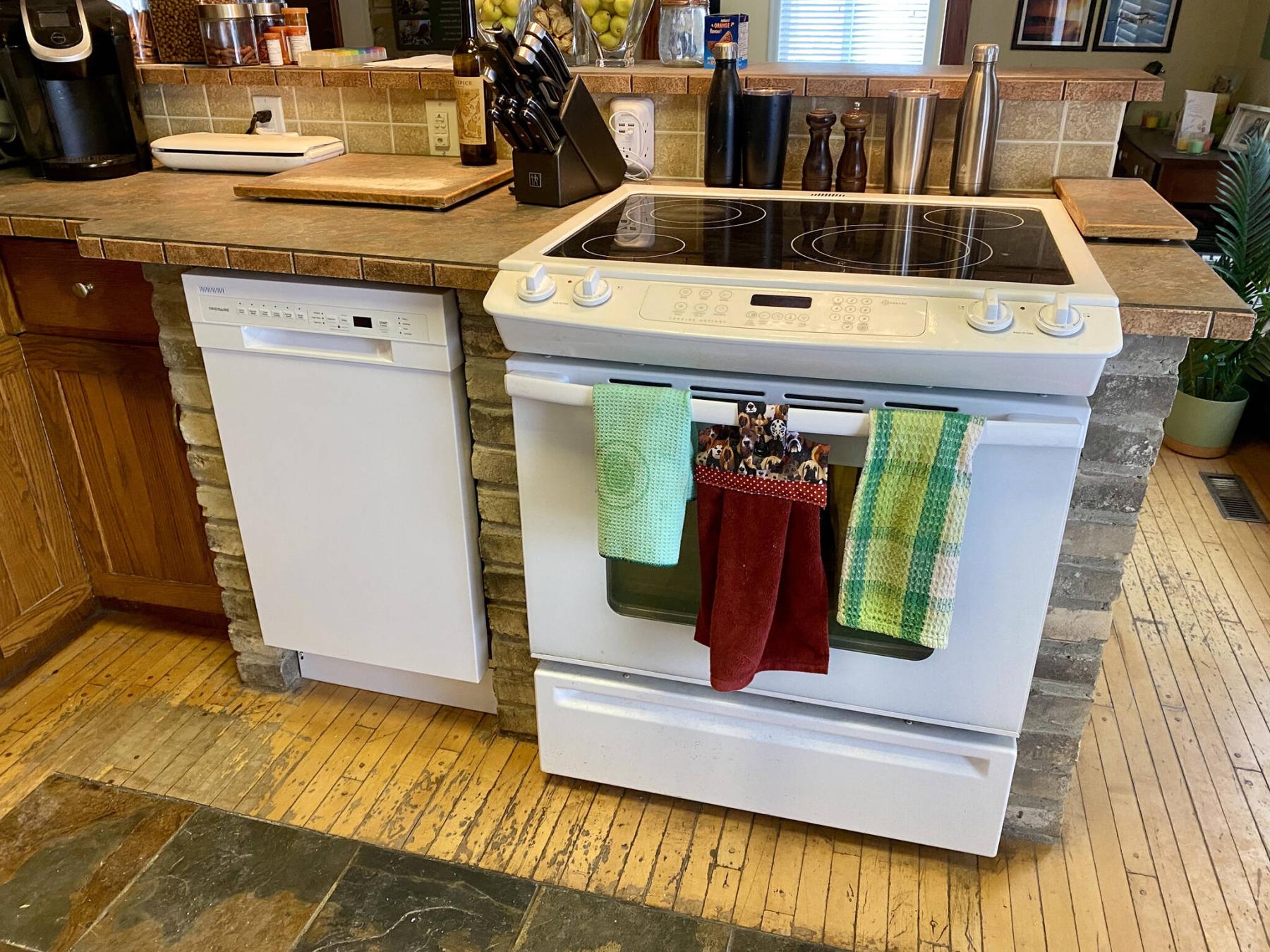Our dishwasher began making an awful sound during the drain cycle. A “tick-tick-tick” as the water drains then becomes a “rat-tat-tat…tat” (you get the idea — a bad sound). Familiar with the mechanics behind the drain pump, either a solid something found its way into the pump housing, or a small piece of plastic broke off and was rattling as the drainage pump operated. Whether or not to fix the 10-year-old Whirlpool dishwasher or simply replace the unit entirely, came down to dollars and common sense.
Roughly a decade ago, the kitchen received new appliances. And because I’m a creature of consistency, I wanted to ensure all kitchen appliances were the same brand. After some research, I elected to purchase a fridge, stove, and dishwasher (as well as the microwave) by Whirlpool. In our kitchen, the base of the peninsula island was custom built using bricks and mortar. As such, the width of the dishwasher cavity caters to an 18-inch unit — a standard 24-inch would have pushed the stove so far over, the pathway along the end of the peninsula island would have been too narrow. Back then, Whirlpool was one of only a few to offer a multi-functional dishwasher, with a desired aesthetic.
When the bad sounds started, the quick call to an appliance servicing center confirmed my initial concerns – although certain parts for the old unit were still available, the old Whirlpool dishwasher had been discontinued, and the parts to be had were borderline cost prohibitive. As such, the decision was made to replace the unit. I had hoped a newer version of the 18-inch-wide Whirlpool brand would be available, it seemed unlikely as most suppliers indicated “on back order” for the unit that best matched the existing dishwasher. It was clear to me that I’d need to widen the search.
There were of few choices that closely matched the “look” and function of our old Whirlpool. After careful deliberation, we settled upon an 18-incher by Frigidaire. The control panel is virtually the same as the existing dishwasher and would clearly suit the purpose. Most importantly, the desired model was in stock, and would arrive in only two weeks. Although the “rat-tat-tat” of the old Whirlpool was alarming, the dishwasher continued to run “noisy” wash cycles until this past weekend, when the new unit was installed. Having replaced a slew of dishwashers in the past (a couple of mine, many for clients), I estimated this endeavour would only take an hour or two.
The countertop retainer clips were first dismounted from the old dishwasher, allowing the unit to slide out. With the water shut-off valve closed, and the breaker to the unit turned off, both the braided water feed and the electrical line were removed from the unit. The drainpipe was then dismounted from the ABS stem, by loosening the clamp on the end of the drain hose. The 90-degree brass fitting on the old dishwasher was recycled, and mounted on the new washer at the water intake (the coupler upon which the braided hose water feed is attached) using Teflon tape on the threads to prevent leaks. The electrical line was then connected to the electrical box on the new dishwasher. And finally, the new drain hose was mounted onto the ABS stem, using the recycled clamp.
The three main aspects were then fully tested before the new unit is set into place within the cavity: the breaker is turned on to ensure the unit receives power, the water shut-off is opened to ensure the fittings do not leak under pressure, and lastly the drain hose is tested to ensure no leaks by running a quick rinse cycle, allowing the dishwasher to fully drain. After all testing has concluded, the unit is leveled at a suitable elevation with the existing countertop, recessed to a depth that is conducive with the other appliances in the kitchen. Finally, once the unit is in place, the retainer clips are fastened to the underside of the countertop, and the decorative toe-kick is mounted below the dishwasher door. In this case, the kick was black and didn’t quite suit. As such, the white toe-kick from the old dishwasher was recycled and adapted by drilling a couple new holes along the new dishwasher base housing, mounted with white screws. Et voila — new dishwasher, sans “rat-tat-tat”!
Although fixing the old dishwasher may have saved a few dollars, repairing a 10-year-old unit that will likely suffer other failures and has been discontinued, would not have made much sense, despite my sometimes-irrational desire to keep all the appliances of same brand. I’m also a fixer — my first instinct is to fix things. In this instance however, the compromise to purchase a new dishwasher is obviously the smarter choice. And hopefully, this new Frigidaire unit will keep our dishes clean for the next decade, at least.
RenoBoss.Inc@outlook.com




